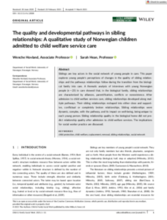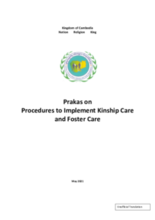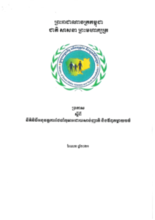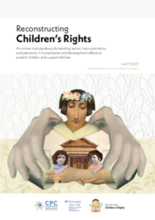Displaying 151 - 160 of 2214
In this paper, authors demonstrate how a structured functional well-being assessment can be used with the custody population to promote an understanding of behavioral health needs, inform case planning, and measure functional improvement over time.
For this study, semi-structured interviews were conducted with 27 foster children placed in long-term family foster care about their experiences regarding “school.”
This paper explores young people's perceptions of changes in the quality of sibling relationships and the pathways relationships follow during the transition from the biological family into care.
This article provides an empirically grounded conceptual–theoretical model of disproportionate representation and burden of psychological comorbidities experienced by sexual and gender minority youth (SGMY) in the foster care system in the US.
The purpose of this study was to present an illustrative test of whether an algorithmic decision aid could be used to identify youth at risk of exiting foster care without permanency.
This study aimed to compare mental health problems and health service use among adolescents receiving in-home services (IHS), living in foster care (FC) and general population youth (GP).
This Prakas was drafted in accordance with Cambodia’s policies, standards and regulations to enable the implementation of kinship care and foster care. The Goal of the Prakas is to ensure the best interests of the child and protect the basic rights of the child separated from his/her biological parents and receiving kinship or foster care, so that they are safe and thriving in a warm, loving and happy family environment.
The Goal of the Prakas is to ensure the best interests of the child and protect the basic rights of the child separated from his/her biological parents and receiving kinship or foster care, so that they are safe and thriving in a warm, loving and happy family environment.
The goal of the Reconstructing Children’s Rights Institute is to raise awareness and recognition of how racism, patriarchy, and power permeate the international child rights and child protection field. Building on Conversation #1, this session expands our political imagination by delving deeper into the international children’s rights and child protection space.
This study utilized secondary data from National Survey of Child and Adolescent Well-being (NSCAW II) to examine the experiences of 298 youth and their caregivers.




